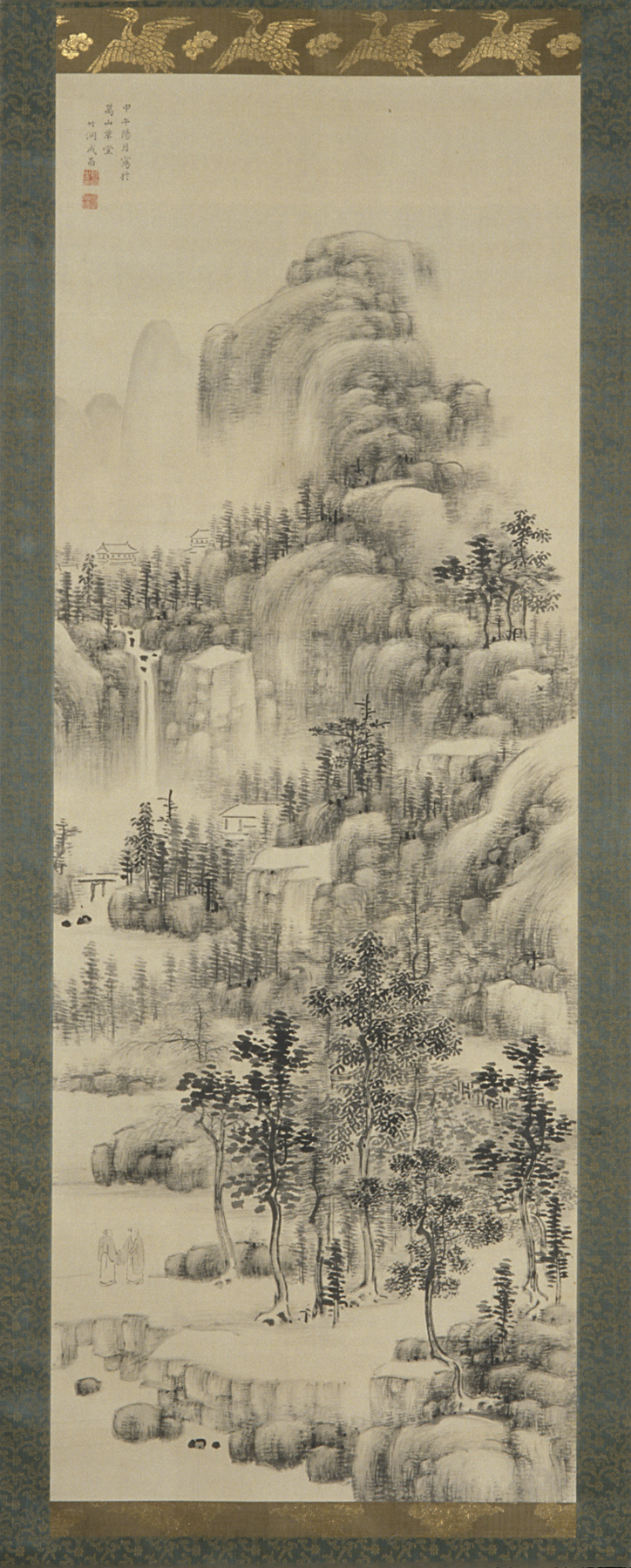Summer Landscape, Nakabayashi Chikutō
Artwork Overview
Nakabayashi Chikutō, artist
1776–1853
Summer Landscape,
1834, Edo period (1600–1868)
Where object was made: Japan
Material/technique: ink; silk
Dimensions:
Image Dimensions Height/Width (Height x Width): 141 x 52.1 cm
Image Dimensions Height/Width (Height x Width): 55 1/2 x 20 1/2 in
Mount Dimensions (Height x Width x Depth): 197.2 x 64.9 cm
Mount Dimensions (Height x Width x Depth): 77 5/8 x 25 9/16 in
Roller Dimensions (Width x Diameter): 27 7/8 in
Image Dimensions Height/Width (Height x Width): 141 x 52.1 cm
Image Dimensions Height/Width (Height x Width): 55 1/2 x 20 1/2 in
Mount Dimensions (Height x Width x Depth): 197.2 x 64.9 cm
Mount Dimensions (Height x Width x Depth): 77 5/8 x 25 9/16 in
Roller Dimensions (Width x Diameter): 27 7/8 in
Credit line: Museum purchase
Accession number: 1987.0187
Not on display
If you wish to reproduce this image, please submit an image request


